第6章 INTRODUCTORY:(5)
But why should we be more shocked by the commission of a crime by a woman than by a man--even the cruellest of crimes? Take the male and female in feral creation, and there is nothing to choose between them in the matter of cruelty.The lion and the lioness both live by murder, and until gravidity makes her slow for the chase the breeding female is by all accounts the more dangerous.The she-bear will just as readily eat up a colony of grubs or despoil the husbandry of the bees as will her mate.If, then, the human animal drops the restraints imposed by law, reverting thereby to the theft, murder, and cunning of savagery, why should it be shocking that the female should equal the male in callousness? Why should it be shocking should she even surpass the male? It is quite possible that, since for physiological reasons she is nearer to instinctive motivation than the male, she cannot help being more ruthless once deterrent inhibition has been sloughed.But is she in fact more dangerous, more deadly as a criminal, than the male?
Lombroso--vide Mr Philip Beaufroy Barry in his essay on Anna Zwanziger--tells us that some of the methods of torture employed by criminal women are so horrible that they cannot be described without outraging the laws of decency.Less squeamish than Lombroso or Mr Barry, I gather aloud that the tortures have to do with the organs of generation.But male savages in African and American Indian tribes have a punishment for adulterous women which will match anything in that line women have ever achieved, and men in England itself have wreaked perverted vengeance on women in ways indescribable too.Though it may be granted that pain inflicted through the genitals is particularly sickening, pain is pain all over the body, and must reach what might be called saturation-point wherever inflicted.And as regards the invention of sickening punishment we need go no farther afield in search foringenuity than the list of English kings.Dirty Jamie the Sixth of Scotland and First of England, under mask of retributive justice, could exercise a vein of cruelty that might have turned a Red Indian green with envy.Moreover, doesn't our word expressing cruelty for cruelty's sake derive from the name of a man--the Marquis de Sade?
I am persuaded that the reason why so many women murderers have made use of poison in their killings is primarily a simple one, a matter of physique.The average murderess, determined on the elimination of, for example, a husband, must be aware that in physical encounter she would have no chance.Then, again, there is in women an almost inborn aversion to the use of weapons.Once in a way, where the murderess was of Amazonian type, physical means have been employed for the slaying.
In this regard Kate Webster, who in 1879 at Richmond murdered and dismembered Mrs Julia Thomas, springs to mind.She was, from all accounts, an exceedingly virile young woman, strong as a pony, and with a devil of a temper.Mr Elliot O'Donnell, dealing with her in his essay in the Notable British Trials'' series, seems to be rather at a loss, considering her lack of physical beauty, to account for her attractiveness to men and to her own sex.But there is no need to account for it.Such a thing is no phenomenon.
I myself, sitting in a taberna in a small Spanish port, was once pestered by a couple of British seamen to interpret for them in their approaches to the daughter of the house.This woman, who had a voice like a raven, seemed able to give quick and snappy answers to the chaff by frequenters of the taberna.Few people in the day-time, either men or women, would pass the house if 'Fina happened to be showing without stopping to have a word with her.She was not at all gentle in manner, but children ran to her.And yet, without being enormously fat, 'Fina must have weighed close on fifteen stone.She had forearms and biceps like a coal-heaver's.She was black-haired, heavy-browed, squish-nosed, moled, and swarthy, and she had a beard and moustache far beyond the stage of incipiency.Yet those two British seamen, fairly decent men, neither drunk nor brutish, could not have been more attracted had 'Fina had the beauty of the Mona Lisa herself.I may add that there were other women handy and that theseamen knew of them.
This in parenthesis, I hope not inappropriately.
Where the selected victim, or victims, is, or are, feeble-bodied you will frequently find the murderess using physical means to her end.Sarah Malcolm, whose case will form one of the chief features of this volume, is an instance in point.Marguerite Diblanc, who strangled Mme Reil in the latter's house in Park Lane on a day in April 1871, is another.Amelia Dyer, the baby-farmer, also strangled her charges.Elizabeth Brownrigg (1767) beat the feeble Mary Clifford to death.I do not know that great physical difference existed to the advantage of the murderess between her and her older victim, Mrs Phoebe Hogg, who, with her baby, was done to death by Mrs Pearcy in October 1890, but the fact that Mrs Hogg had been battered about the head, and that the head had been almost severed from the body, would seem to indicate that the murderess was the stronger of the two women.The case of Belle Gunness (treated by Mr George Dilnot in his Rogues March) might be cited.Fat, gross-featured, far from attractive though she was, her victims were all men who had married or had wanted to marry her.Mr Dilnot says these victims almost certainly numbered more than a hundred.'' She murdered for money, using chloral to stupefy, and an axe for the actual killing.She herself was slain and burned, with her three children, by a male accomplice whom she was planning to dispose of, he having arrived at the point of knowing too much.1907 was the date of her death at La Porte, U.S.A.
Bles, 1934.